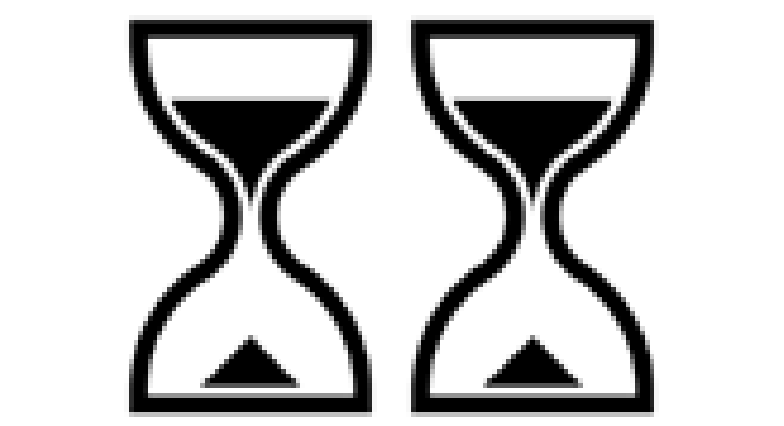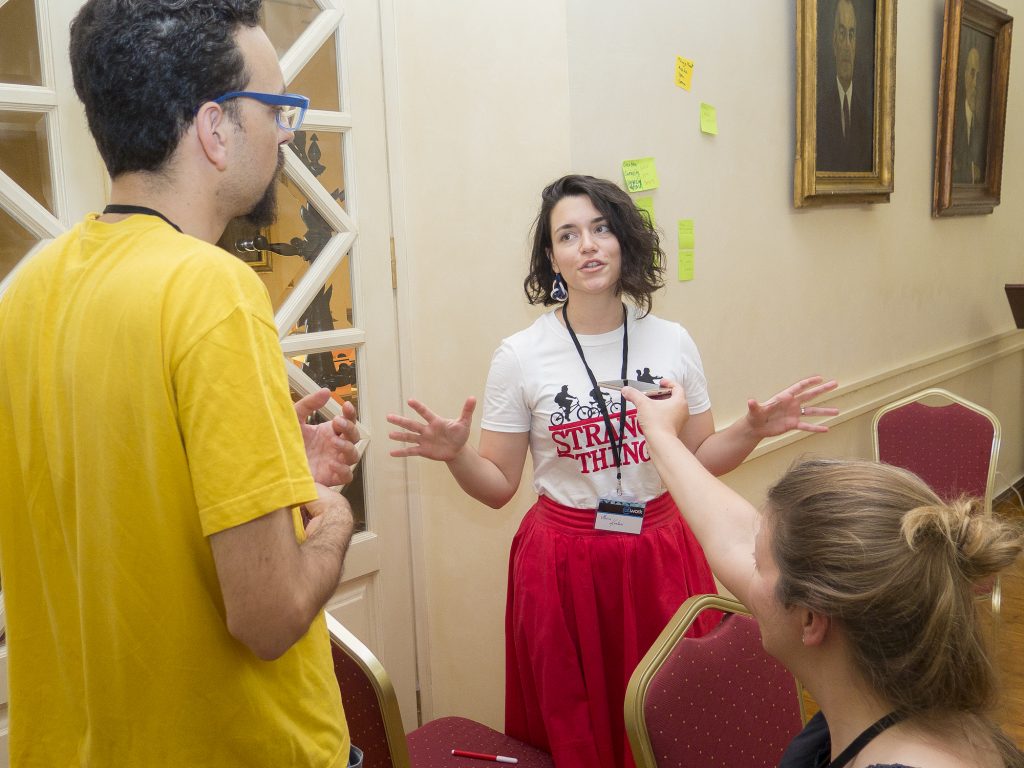Evaluation tool 6 – Snapshot interviews
What is this tool?
Snapshot interviews are very brief, focused interviews of 3-4 questions, taking no longer than 2 minutes to complete.
They can be used for a range of purposes, e.g. to gather impressions of why people have come to an event, or to find out what they thought of the experience.
What kind of activities can I evaluate with it?
Snapshot interviews are particularly effective for use with general public audiences and drop-in events (demonstrations, festivals etc), but can also be used for interactive workshops, lectures / presentations, and with school groups or interested adults.
Snapshot interviews at a glance…
| Who: |  |  |  |  | ||
| What: |  |  |  | |||
| Data: |  |  |  | |||
| Time: |  |  |  | |||
| Gain: |  |  | ||||
| GLOs: |  |  |  |  |
When should I use it?
This tool is best suited to use at the beginning or end of an event.
What do I need?
- Pre-prepared questions (it may take some thought to come up with 3-4 questions that capture the information you want)
- Printed sheets to note down responses for each of the interviews OR
- A recording device (mobile phone, tape recorder etc)
Let’s get started…
Prior to the event, you’ll need to prepare your questions. The particular content of the questions depends on what you would like to know. For example, if your aim is to get to know your audience better, you might ask questions such as:
Why did you come here today? Who are you here with?
If, on the other hand, you want to gather quick impressions about the event itself, you might ask questions like:
What did you expect this event would be like?
What part of the event did you like the most?
It can be challenging to limit yourself to three or four questions. If you find that you would really like to ask several more, it is better to group those questions into sets of three or four and conduct a series of snapshot interviews (i.e. each person could be asked a different set of questions). However, doing so also means that you will be able to gather less data about each question.

It is also important to note that the questions do not involve further prompts. That is, although it is tempting to ask ‘why’ someone liked a particular aspect of an event, doing so would take too long and understanding deeper ‘why’ questions requires a longer more in-depth interview.
Snapshot interviews are good at gathering a range of impressions from larger numbers quite quickly – a snap-shot of the landscape of your participants. If your event runs over a long enough period of time, you could perhaps consider doing the snapshot interviews first to get a broader view of your participants’ experiences, then following up with more detailed interviews at a later time to probe specific aspects.
For purposes of analysis, it can be helpful to collect a small amount of background information about participants. For instance, if interviewing teachers, it can be useful to add a brief question about which age group they teach (e.g. so you can compare primary with secondary school teachers), or to ask members of a public audience if they have a science degree. You can also make a note based on visual impressions of the age, gender and ethnic background of your respondents, should you so choose. However, snapshot interviews are not the place to ask detailed background questions.
At the event (before, after, or both), approach people and ask whether they have 90 seconds (or two minutes) to answer a few questions. Informing them of the very short time frame in advance often means people are more willing to participate. Not everyone – especially teachers – feels they have five minutes to complete an interview, but many feel they can spare one or two minutes! At the same time, you might encounter people who really do want to talk for longer – in that case, it is up to you to decide whether to continue the conversation or whether to try to wrap it up quickly (but politely!) and move on.
OK, what do I do with my data now?
Once you’ve gathered your data, you need to code it, or group it into categories. Try reading our thematic coding advice to help you with this process.
Once you have coded your data (put it into categories), then you can summarise it. For example, ‘8 of 10 respondents said that they came to spend time with their families’ or ‘3 of 15 respondents said the group discussion was their least favourite part of the event.’ While it is possible to report these as percentages, it is not advisable if you have fewer than 100 responses. You may also be able to look at your data by gender, age etc. However, you do need to be cautious because of how the data has been collected (generally based on visual impressions). Nevertheless, sometimes trends do appear (i.e. if there are clear differences by gender in favourite/least favourite parts of an event).
Finally, although each question is likely to have its own set of response categories, when you look across your analyses, some further connections might be present. For instance, responses to ‘What did you expect this event to be like?’ might include ‘have fun’, ‘learn something new’ and ‘using cool stuff’ (like looking through a telescope), while responses to ‘What part of the event did you like the most?’ might include ‘demonstrations’ and ‘using cool stuff’ (looking through telescopes). From this, it is possible to discern that the opportunity to look through a telescope was an important element of the event for your participants, and should probably be continued.
You also might want to maximise the number of participants who do get to look through a telescope. Note that although it is not advisable to try to combine these kinds of categories statistically, you can discuss such similarities when reporting your evaluation results, especially since they suggest a common recommendation for future similar events.
Got it! How can I take this further?
While snapshot interviews cannot provide in- depth insight, the responses may provide useful guidance for additional avenues to explore. For example, answers about reasons for attending or who people come with could be used to create response options for self-response surveys. In addition, you may want to follow up why people responded as they did (e.g. about favourite and least favourite parts of an event) or other responses (e.g. about their expectations for this kind of event). Such patterns can form the focus of more in-depth qualitative interviews or focus groups.
Download worksheet
Download the Snapshot interviews tool worksheet
Case study
This Case study using Tool 6 – Snapshot interviews is taken from a science museum that hosts a lot of visits by school students and their teachers. Their experience is also likely to be similar to a university laboratory or other organisation which is visited by schools.
Back to Tools

